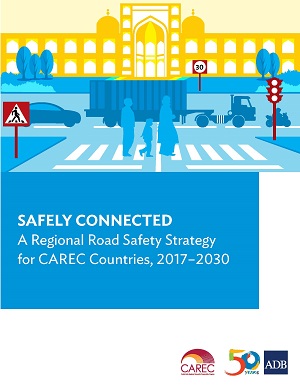CAREC Road Safety Engineering Manual 3: Roadside Hazard Management

Single vehicle “run-off road” crashes are a significant problem on CAREC roads. They are particularly severe and can occur anywhere and at any time. Identifying, investigating, and treating roadside hazards are significant road safety challenges along CAREC highways. It uses a roadside hazard management strategy and the clear zone concept to explain how CAREC road authorities can (i) identify roadside hazards, (ii) investigate how best to treat those roadside hazards, and (iii) implement effective safety improvements. The manual explains the three groups of safety barriers and offers options for safer roadside furniture.
About the CAREC Road Safety Engineering Manuals
The series of road safety engineering manuals of the CAREC Program came from the endorsement of the 2017-2030 CAREC Road Safety Strategy 2017-2030 by member countries. The strategy supports and encourages CAREC authorities to plan, design, construct, and maintain safe roads.
Safely Connected: A Regional Road Safety Strategy for CAREC Countries, 2017-2030

Road accidents are the sixth leading cause of death in Central Asia., with a road traffic death rate of 10 to 25 per 100,000. A framework is needed for Central Asia Regional Economic Cooperation (CAREC) member countries to effectively implement CAREC’s commitment to road safety. CAREC’s strategy envisions making its road corridors safe, efficient, and attractive to motorists. The target is to halve the number of CAREC road corridor fatalities by 2030—translating to 23,000 lives saved and 250,000 serious injuries prevented annually.
The strategy builds upon existing strengths within the region, addresses gaps, utilizes good practice, and mitigates risks. This publication embodies the CAREC countries’ commitment to make road safety a priority.
Pagination
- Previous page
- Page 2